Park Pro
Background
- As AI and collaboration are changing the capability of design tool, I was asked to define a MVP which could test the feasibility of out next-gen design product.
- Based on the industry research we chose to redesign the Parking Lot early-stage design process. Parking availability is problematic in China due to rapid urbanization and the increasing number of vehicles.
- The early design process has a major impact on the entire lifecycle of a parking lot. By applying first principles and analysing the needs of stakeholders and pain points of designers, we developed a workflow that involves human concept input, computer detailed refinement, and real-time simulation to meet the challenges.
Problem
After the first round of research, we interviewed 10 designers and 5 developers. We found out that garage, especially the underground garage, is as important as the main building in a design.
However, there are two issues with the current process:
- Designers use CAD for layout, but manual revisions involve a lot of work.
- Feasibility studies for design proposals are time-consuming, and it is difficult to convince the client.
First asumption: What if we could automate and quickly generate garage layout plans that are interactive and optimized through simulation?
Scope
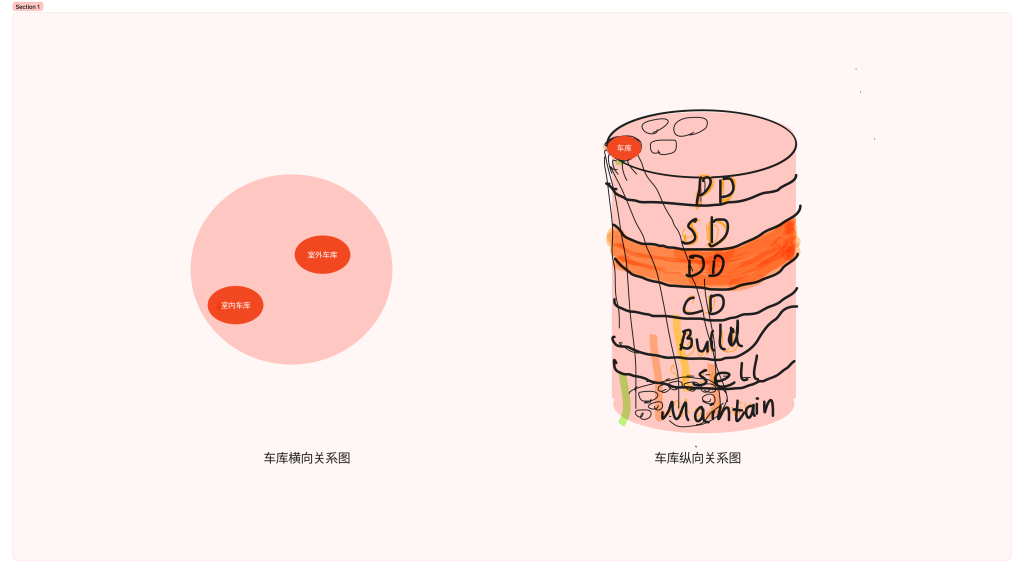
Lorem ipsum dolor sit amet, consectetur adipiscing elit. Ut elit tellus, luctus nec ullamcorper mattis, pulvinar dapibus leo.
Research
| Selected qualitative interviews |
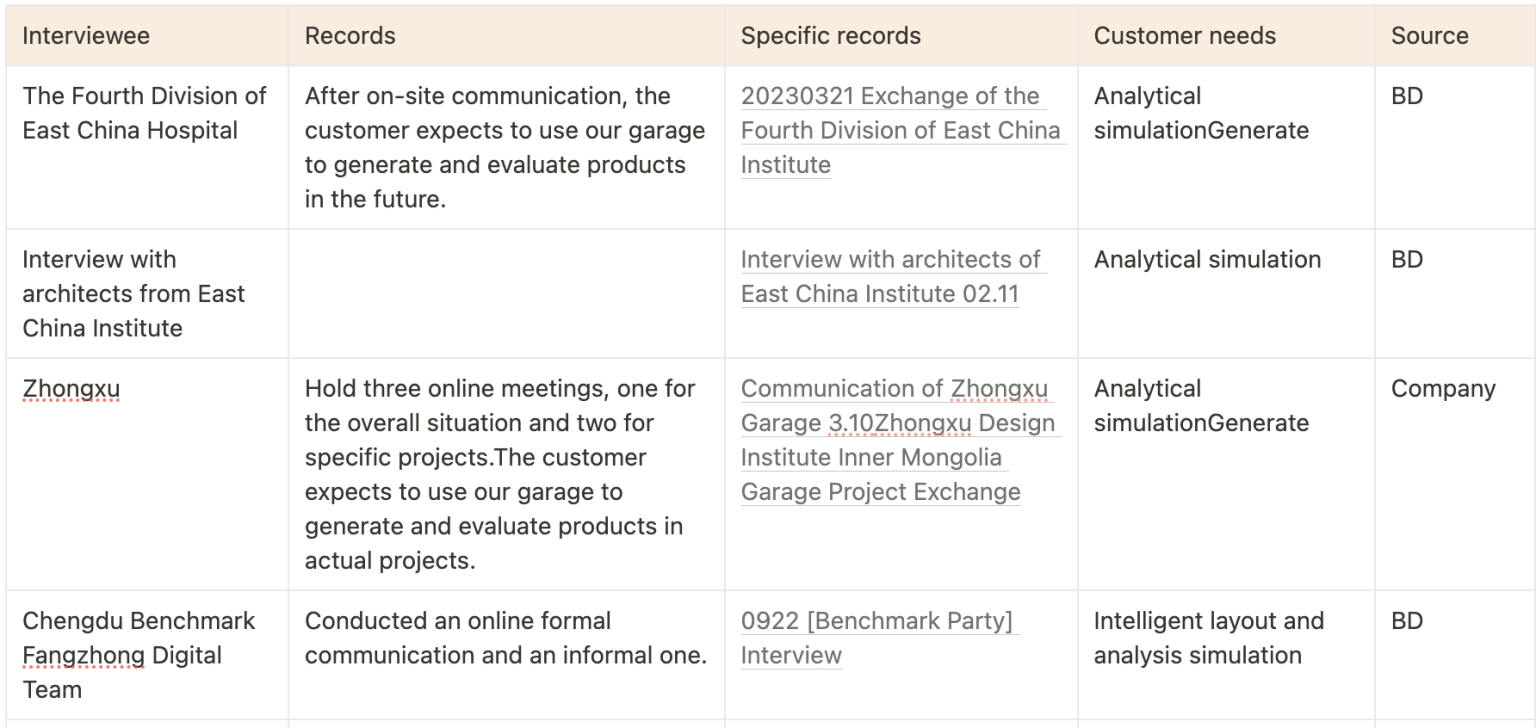
First asumption: What if we could automate and quickly generate garage layout plans that are interactive and optimized through simulation?
Stakeholder maps and requirements
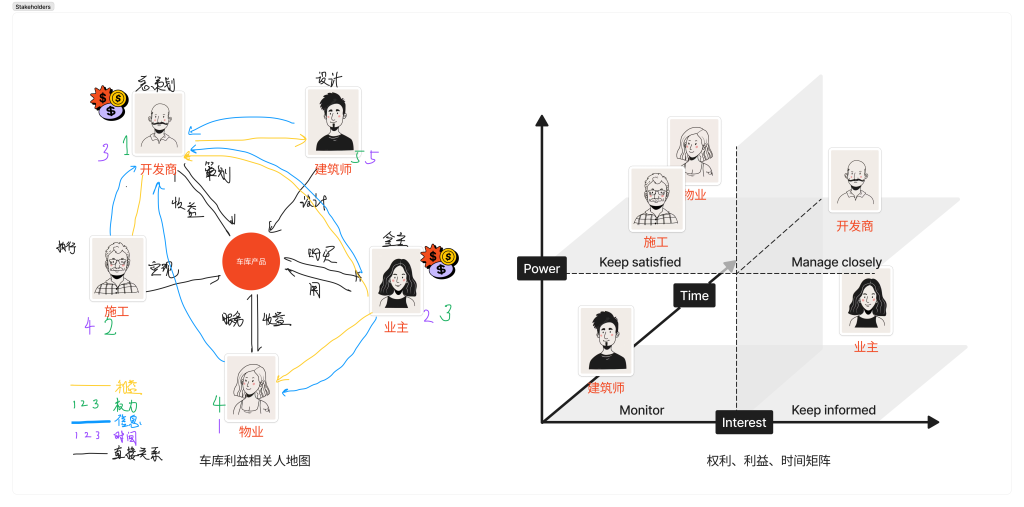
“A design tool that only satisfies the designer is doomed to fail. Real estate development is a complex business that must consider the needs of the architect’s client, as well as the needs of the client’s client.”
–Mr.Hua LIU
Insights
A good parking lots products should not only serve the architect like heping them design faster, but instead enable them to have better quality and vision on the overall parking experiances.
In a word: Out product should make the design countable, and benefit the whole stakeholders from the early design stage.
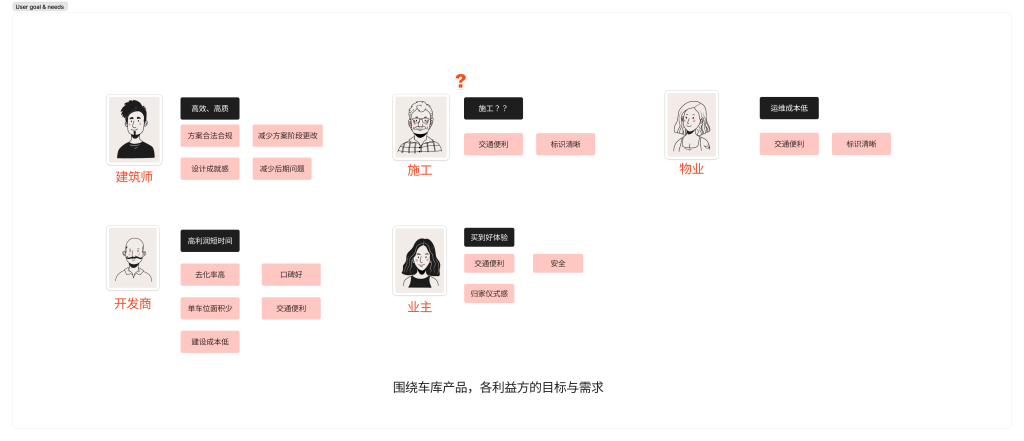
User journey map
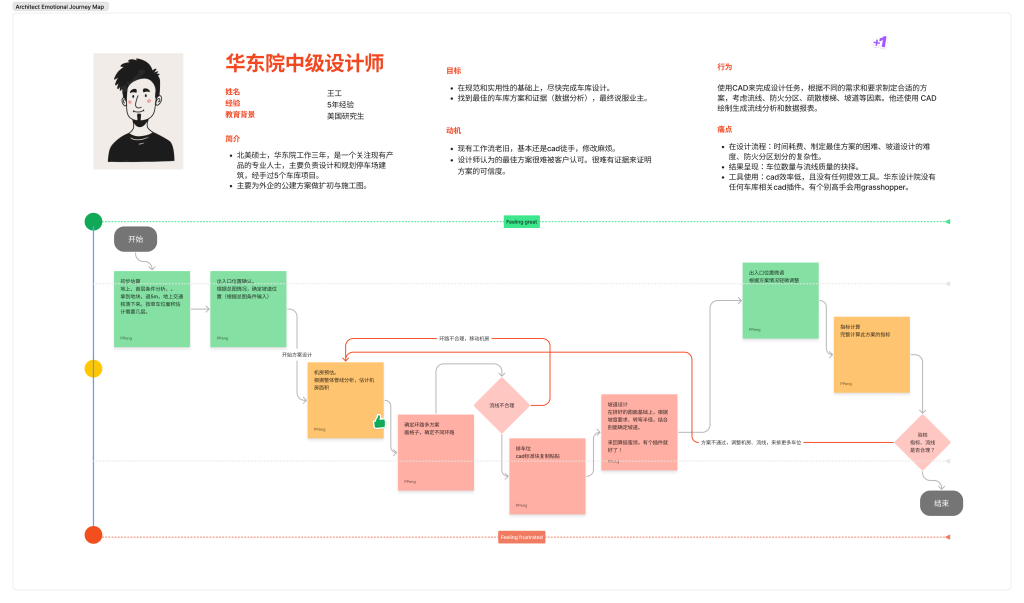
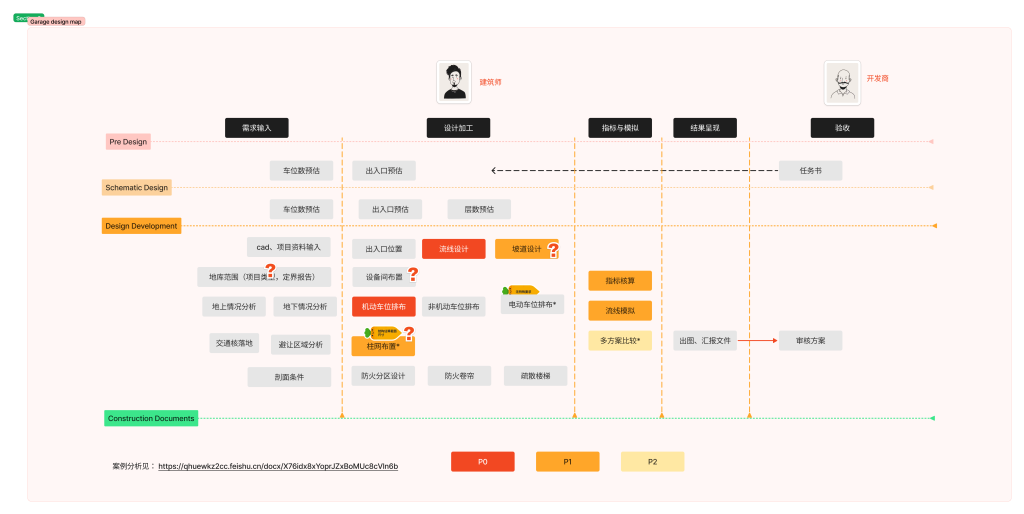
Competitor Analysis
A table that covers all the competitors in China market.
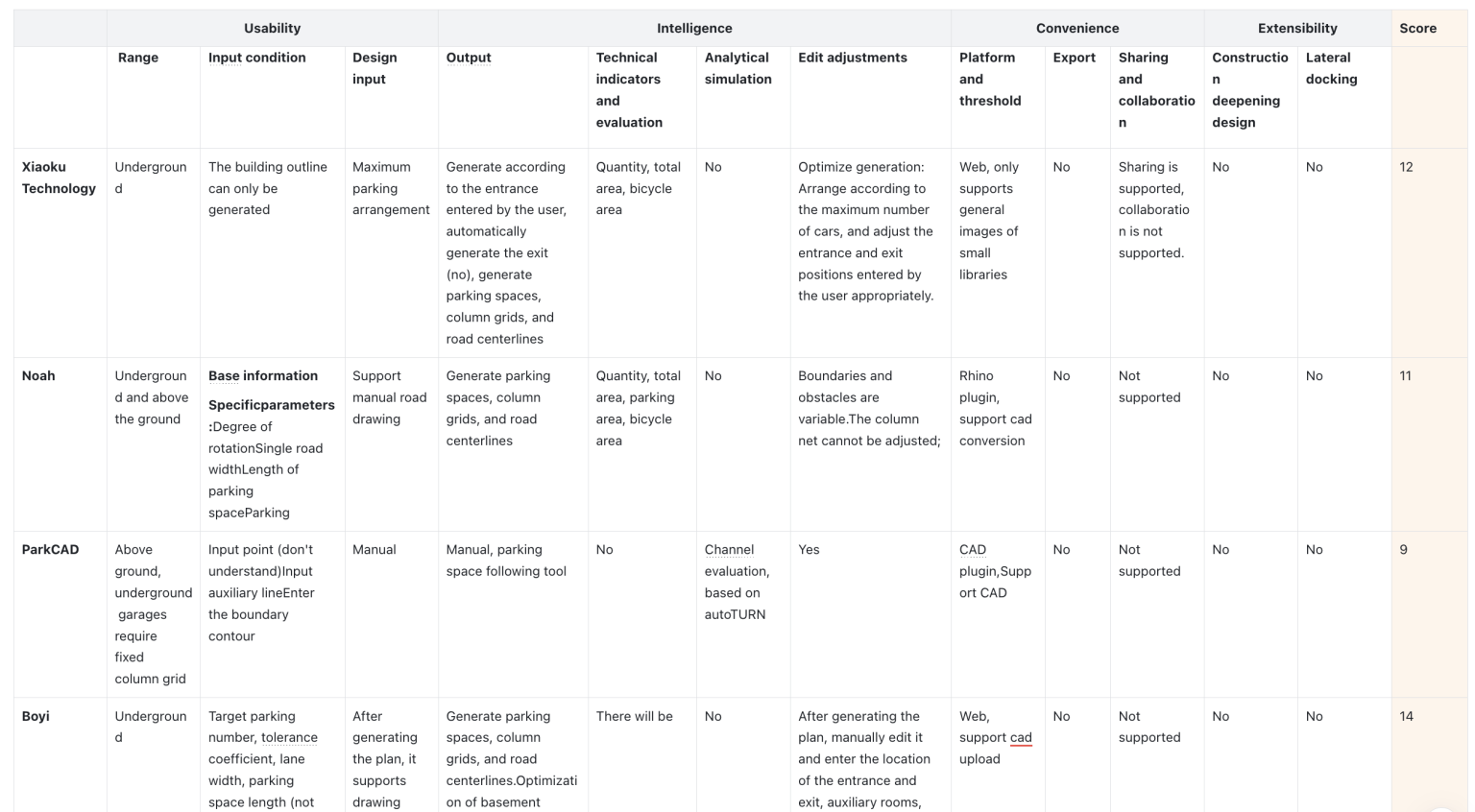
Opportunities
- Lack of relationship between generated column grid and upper part.
- Vague product application stage: In addition to broad ideas, there are not enough input conditions to support preliminary design.
- There is no product in China that does quantitative analysis of garages.
- The following parts are are missing in the generated results:
- Arrangement along the building axis
- Generation of multiple directions
- Relationship between generated parking space quantity and traffic efficiency (quality)
Challenges
- Combined with the form of CAD plug-in, but ultimately need to lead to the concetto.
- Generate extreme solutions: the largest number, reasonable streamline
- Streamline generation quality, interaction mode.
- Whether to do multi-scheme simulation and evaluation (improve scheme credibility)
- Graphics and product design need to support user-friendly manual editing after generation.
- Define building types (different generation goals, residential single parking space minimum, luxury houses, public buildings emphasize streamline, weaken economy)
- Simulation of vehicle flow
- Comprehensive evaluation of the design (to convince the client)
Product
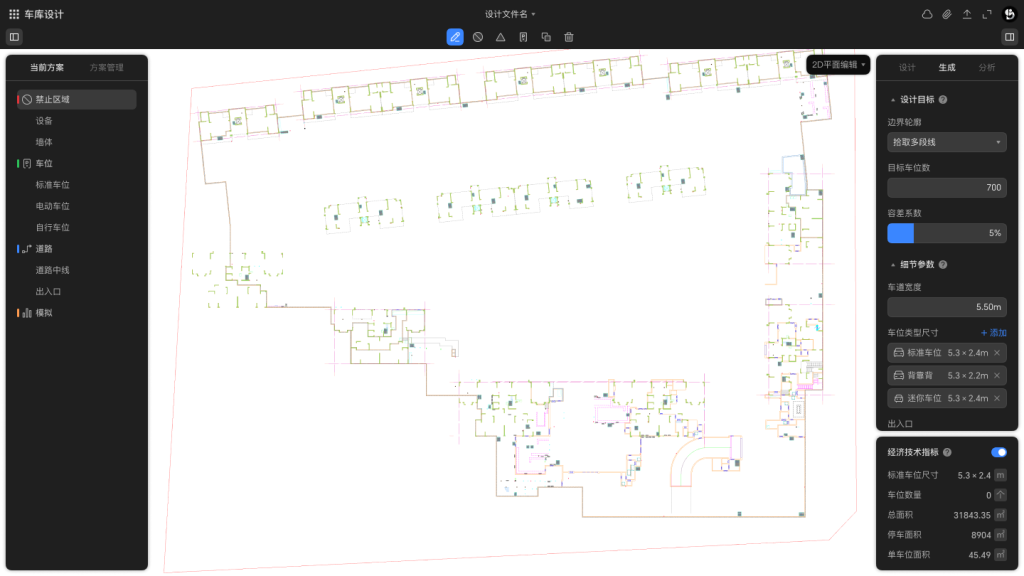
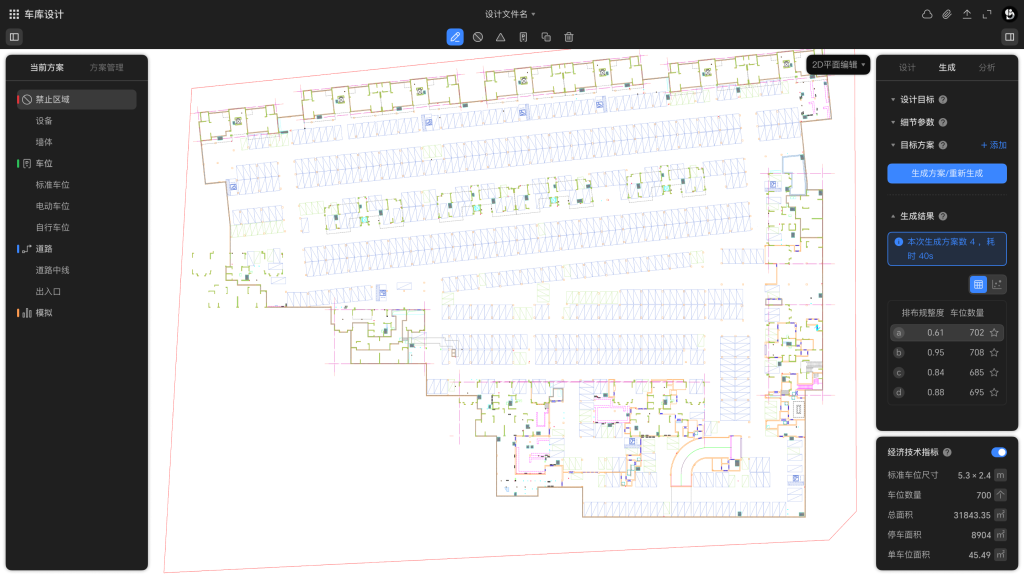
Impact
-
Trusted by 3 KAs in Introduction Stage and became a key incubation project
-
Exhibited at the China Digital Building Summit 2023
Learning
Care the client of your client.